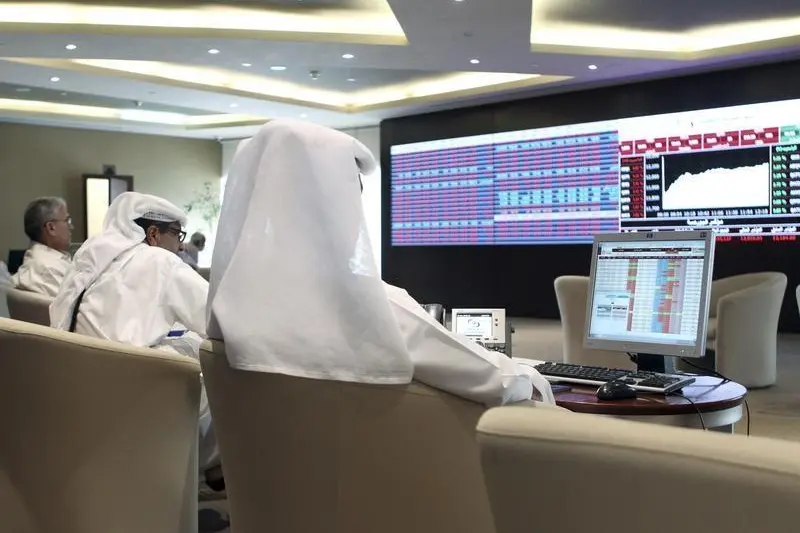PHOTO
02 February 2017
Qatar, Saudi Arabia, Kuwait and Argentina are expected to be the largest gross and net debt issuers in 2017. Just these four issuers could account for 37 percent of the total sovereign gross issuance. Among those, Bank of America Merrill Lynch expects Kuwait, with no external sovereign debt, to come to market with about $10bn to finance a budget deficit resulting from low oil prices, Bank of America Merrill Lynch said yesterday.
Bank of America Merrill Lynch expects ratings for Qatar to remain unchanged as in their view ratings are constrained by institutional factors rather than macroeconomic performance as long as sovereign wealth provides a cushion.
“The bulk of 2017 sovereign issuance is expected to come from GCC, followed by Latin America. GCC issuance has been increasing rapidly mainly due to low oil prices, with some new issuers in 2016, and we expect 2017 issuance to continue to be high”, the Merrill Lynch said in its’ macro monthly report.
Bank of America Merrill Lynch has a Market weight recommendation on Abu Dhabi external debt. Abu Dhabi's external debt is tightly held due to its scarcity value. The sovereign's balance sheet remains robust nevertheless with a large stock of foreign assets, despite fiscal deterioration. Upside risks are a rebound in oil prices, improved local liquidity and more vigorous fiscal consolidation to slow drawdown of foreign assets. The Merrill Lynch has a Marketweight recommendation on Dubai external debt.
The Saudi USD peg will hold given sizeable foreign assets and the experience with implementing multi-year fiscal adjustments. Energy policy should shift towards supporting oil prices. The Merrill Lynch sees the Saudi budget being consistent with oil prices of $55/bbl ($65/bbl target, $40/bbl floor) and a fiscal breakeven of $98/bbl. Primary risks in Saudi Arabia would be a prolonged period of low oil prices, fiscal reform slippage, devaluation, political succession and regional geopolitical threats. The analysts expect credit ratings for Kuwait to remain unchanged, as in their view ratings are constrained by institutional factors rather than macroeconomic performance as long as sovereign wealth provides a cushion.
Emerging Market as an asset class still benefits from diversity, as a large concentration of LatAm and Asia provides an offset to the volatility in the Central and Eastern European countries.
In 2016, sovereigns issued $135bn, mainly from LatAm, while corporates issued about $300bn, mainly due to Asia corporate. Total issuance reached $435bn in 2016 and we expect 2017 at $464bn.
“Our corporate credit strategists expect corporate issuance to be $320bn in 2017, up 7 percent from 2016, with net issuance expected at $141bn. With expected corporate coupon payments at $70bn in 2017, issuance net of amortizations and interest would be $71bn.”
Merill Lynch expects Asia corporate bond issuance to keep growing faster than the other regions. It expects growth in Asia corporate issuance (up 22 percent to $185bn) and LatAm (up 17 percent to $74bn), but a decline in EEMEA issuance (down 14 percent to $60bn).
Thus, more than 60 percent is expected to come from Asia. The overall increase is driven by maturities and more liability management over the next three years.
The gross sovereign external issuance is expected to come in at $144bn in 2017, only 6 percent higher than in 2016.
Qatar, Saudi Arabia, Kuwait and Argentina are expected to be the largest gross and net debt issuers in 2017. Just these four issuers could account for 37 percent of the total sovereign gross issuance. Among those, Bank of America Merrill Lynch expects Kuwait, with no external sovereign debt, to come to market with about $10bn to finance a budget deficit resulting from low oil prices, Bank of America Merrill Lynch said yesterday.
Bank of America Merrill Lynch expects ratings for Qatar to remain unchanged as in their view ratings are constrained by institutional factors rather than macroeconomic performance as long as sovereign wealth provides a cushion.
“The bulk of 2017 sovereign issuance is expected to come from GCC, followed by Latin America. GCC issuance has been increasing rapidly mainly due to low oil prices, with some new issuers in 2016, and we expect 2017 issuance to continue to be high”, the Merrill Lynch said in its’ macro monthly report.
Bank of America Merrill Lynch has a Market weight recommendation on Abu Dhabi external debt. Abu Dhabi's external debt is tightly held due to its scarcity value. The sovereign's balance sheet remains robust nevertheless with a large stock of foreign assets, despite fiscal deterioration. Upside risks are a rebound in oil prices, improved local liquidity and more vigorous fiscal consolidation to slow drawdown of foreign assets. The Merrill Lynch has a Marketweight recommendation on Dubai external debt.
The Saudi USD peg will hold given sizeable foreign assets and the experience with implementing multi-year fiscal adjustments. Energy policy should shift towards supporting oil prices. The Merrill Lynch sees the Saudi budget being consistent with oil prices of $55/bbl ($65/bbl target, $40/bbl floor) and a fiscal breakeven of $98/bbl. Primary risks in Saudi Arabia would be a prolonged period of low oil prices, fiscal reform slippage, devaluation, political succession and regional geopolitical threats. The analysts expect credit ratings for Kuwait to remain unchanged, as in their view ratings are constrained by institutional factors rather than macroeconomic performance as long as sovereign wealth provides a cushion.
Emerging Market as an asset class still benefits from diversity, as a large concentration of LatAm and Asia provides an offset to the volatility in the Central and Eastern European countries.
In 2016, sovereigns issued $135bn, mainly from LatAm, while corporates issued about $300bn, mainly due to Asia corporate. Total issuance reached $435bn in 2016 and we expect 2017 at $464bn.
“Our corporate credit strategists expect corporate issuance to be $320bn in 2017, up 7 percent from 2016, with net issuance expected at $141bn. With expected corporate coupon payments at $70bn in 2017, issuance net of amortizations and interest would be $71bn.”
Merill Lynch expects Asia corporate bond issuance to keep growing faster than the other regions. It expects growth in Asia corporate issuance (up 22 percent to $185bn) and LatAm (up 17 percent to $74bn), but a decline in EEMEA issuance (down 14 percent to $60bn).
Thus, more than 60 percent is expected to come from Asia. The overall increase is driven by maturities and more liability management over the next three years.
The gross sovereign external issuance is expected to come in at $144bn in 2017, only 6 percent higher than in 2016.
© The Peninsula 2017












